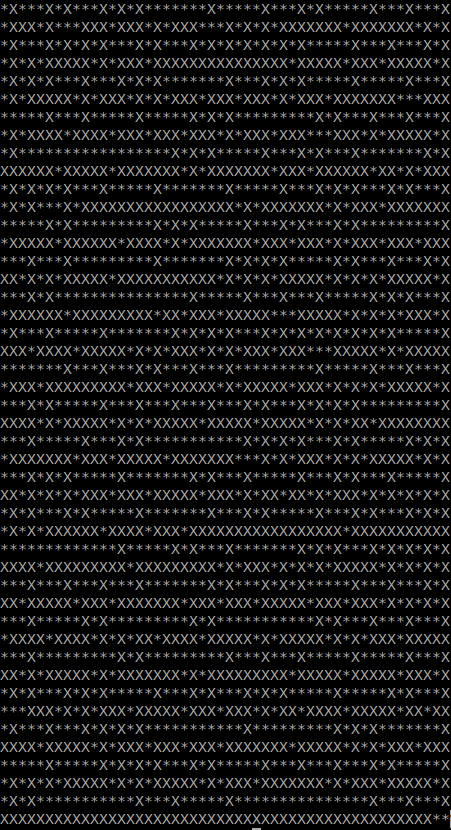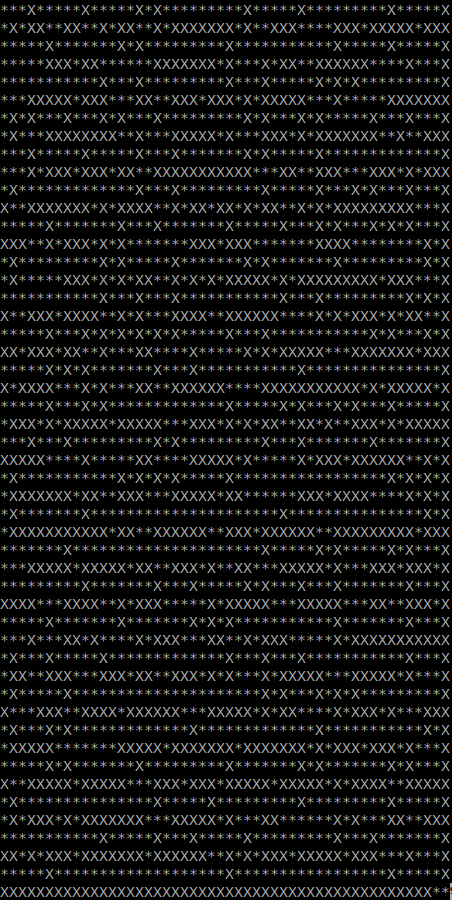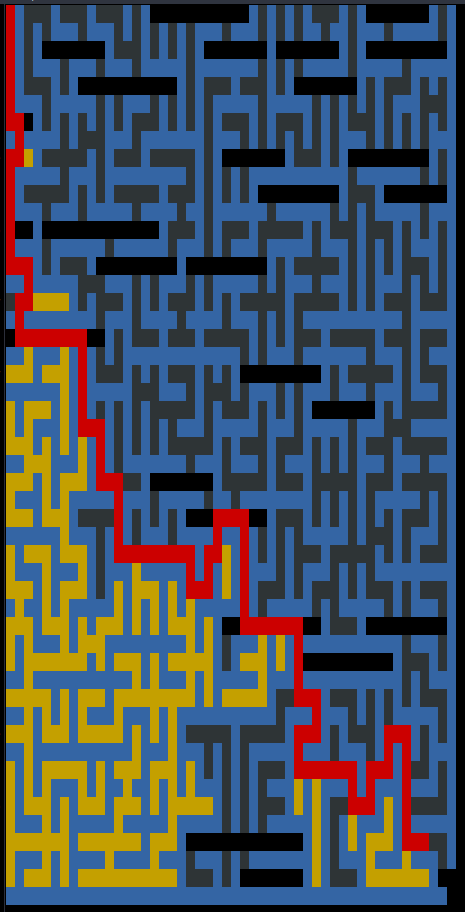For perfect 250x250 it's instantanly solve.
The generator is a randomized kruskal algorithm. The output is provided in ascii on the terminal. To save the result you have to redirect the output in a file. You can generate perfect and imperfect maze.
The * character represent empty fields. The X character represent walls. A maze always start with a * in top left and is always solvable.
compiling:
make
cleaning obj files:
make clean
cleaning binary files:
make fclean
cleaning all and compile:
make re
For perfect maze:
./generator [WIDTH] [HEIGHT] perfect
For imperfect maze:
./generator [WIDTH] [HEIGHT] imperfect
Redirect the result in a file to save it:
./generator [WIDTH] [HEIGHT] perfect > perfect_maze.map
The solver is a backtracking algorithm.
Ncurses library is used to display the output in slow motion. You can choose the speed (in milliseconds) of the slow motion with the Macro UTIME_TO_WAIT in solver.h file.
The walls are in blue and the empty fieds are in black. The bad way travelled by the algorithm is in yellow. The good one is in red.
compiling:
make
cleaning obj files:
make clean
cleaning binary files:
make fclean
cleaning all and compile:
make re
Execute binarys' solver with the maze map in parameter:
./solver perfect_maze.map
To test the solution you have examples of perfect and imperfect labyrinths in the "mazes" folder.



